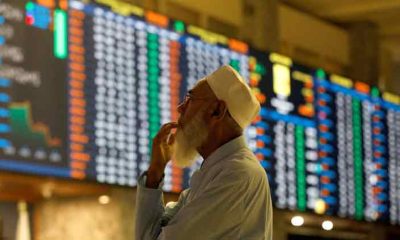China will be the elephant in the room at this week’s meeting of Group of Seven (G7) finance leaders, who will seek to diversify supply chains away from the country — but also try to get Beijing’s cooperation in solving global debt problems.
The conflicting goals come on top of vulnerabilities the G7 rich democracies face due to their heavily reliance on China, which is the world’s second-largest economy and the second biggest external holder of U.S. debt.
The heightening risk of a U.S. debt default, which could jolt financial markets already jittery after recent bank failures, will overshadow the three-day meeting kicking off on Thursday in the Japanese city of Niigata.
While Treasury Secretary Janet Yellen will join the G7 finance leaders’ talks, U.S. President Joe Biden on Tuesday signalled the chance of cancelling his trip to Hiroshima for next week’s summit if the debt issue is not resolved.
“The dollar is regarded — and Treasury securities –as the bedrock safe asset in the entire global financial system,” Yellen said on Monday, in a warning of the damage a default could inflict on the U.S. economy and financial markets.
“It’s trusted, and it is the ultimate safe asset and a failure to raise the debt ceiling, impairing the U.S. credit rating, would put that at risk. So that is a real concern.”
The U.S. debt crisis is a headache for Japan, which is this year’s G7 chair and the world’s biggest holder of U.S. debt.
Other key themes to be discussed at this week’s G7 gathering include ways to strengthen the global financial system, steps to prevent Russia from circumventing sanctions over its invasion of Ukraine, and global economic risks such as stubbornly high inflation, Japanese officials say.
Japan hopes to issue a G7 joint statement after the meeting, they added.
CHINA SLOWDOWN LOOMS
As host, Japan has drawn up a long list of other themes that will likely leave policymakers little time to enjoy Niigata’s prized rice wine, many of which are linked to China.
Among them is a plan to agree on an ambitious statement for diversifying supply chains “away from countries like China” through partnerships with low and middle-income nations.
Underscoring its desire to win over the “Global South,” Japanese Finance Minister Shunichi Suzuki invited this year’s African Union chair Comoros to an outreach meeting to be held on Friday.
Five more countries were invited to the outreach including Brazil, India and Indonesia – but not China – although emerging nations’ debt problems will feature high on the agenda.
On the other hand, Tokyo is courting China to join a creditor nations’ meeting it initiated to resolve Sri Lanka’s debt. Beijing attended the first round of talks on Tuesday as an observer, not as an official participant.
As the world’s largest official bilateral creditor, China should participate in meaningful debt relief for countries facing problems, but it has served for too long as a “roadblock” to necessary action, Yellen said last month.
There was uncertainty on whether G7 can convince emerging economies to help build supply chains less reliant on China, with many of them having been hit by aggressive U.S. rate hikes that have increased their dollar-denominated debt burden.
“The debt problems of emerging nations are becoming increasingly serious due in part to the strong dollar,” said Takahide Kiuchi, an analyst at Nomura Research Institute.
“The agenda of talks show how G7 is becoming increasingly politicized in nature, with an emphasis on countering China.”
For the G7 central bank chiefs, inflation will likely remain the key issue. Many of their economies are facing an inflection point, with past aggressive interest rate hikes beginning to cool growth and unsettling the banking system.
The International Monetary Fund last month trimmed its 2023 global growth outlook and warned a severe flare-up of financial system turmoil could slash output to near recessionary levels.
Data released on Tuesday showed China’s imports contracted sharply and export growth slowed in April, dashing policymakers’ hopes that a strong rebound in China’s economy will offset an expected slowdown in other parts of the world.
Post Views: 124


 Sports3 months ago
Sports3 months ago
 Sports3 months ago
Sports3 months ago
 Fashion2 months ago
Fashion2 months ago
 pakistan3 months ago
pakistan3 months ago
 pakistan3 months ago
pakistan3 months ago
 World2 months ago
World2 months ago
 Sports2 months ago
Sports2 months ago
 World2 months ago
World2 months ago






















